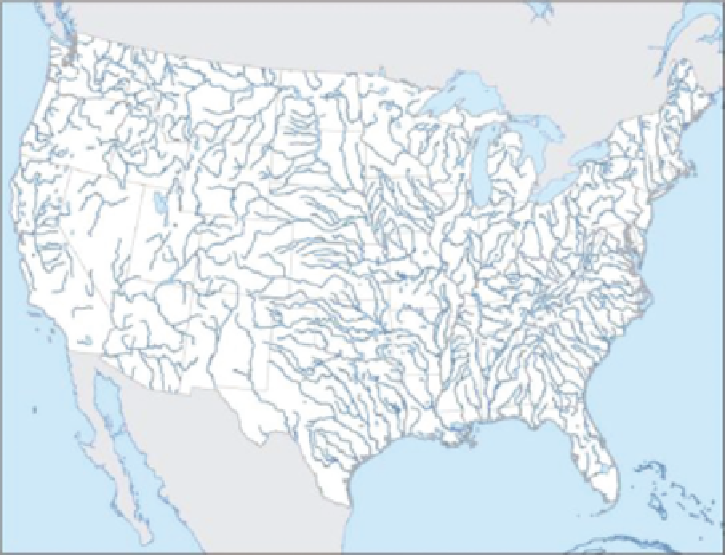Environmental Engineering Reference
In-Depth Information
FIGURE 7.1
Major rivers and streams of the conterminous United States. (From USEPA,
Wadeable Streams
Assessment: A Collaborative Survey of the Nation's Streams
, U.S. Environmental Protection Agency, Ofice
of Research and Development, 2006.)
7.2 AMBIENT WATER QUALITY CRITERIA
As introduced in Chapter 5 on water quality processes, one metric used to evaluate whether
waterbodies of the United States are “ishable and swimmable” is the ambient concentrations of
speciic chemicals. The premise is that target concentrations of certain materials could be estab-
lished, which, if met, would protect both human and aquatic health. Therefore, the concentrations
themselves, rather than the aquatic biota or biotic community, could provide an indication of
aquatic health.
A fundamental provision of the CWA (Section 304(a)(1)), and amendments, was the requirement
that states develop water quality standards for waterbodies. The U.S. Environmental Protection
Agency (U.S. EPA) publishes standards (under 304(a) of the CWA) that states can use or modify,
or states can adopt criteria based on other scientiically defensible methods (subject to approval by
the U.S. EPA). States are also required to monitor for compliance with these standards, and report
impairments (Section 305 of the CWA) to Congress.
Water quality standards are the foundation of a water quality-based control program and deine
the water quality goals for a waterbody, again with the presumption that water quality goals provide
a metric for aquatic and human health. Standards have also established water quality-based treat-
ment practices for dischargers (WQBELS, or water quality-based efluent limits). A water quality
standard consists of three basic elements:
•
Beneicial designated uses (e.g., designated uses include activities such as swimming,
drinking water supply, oyster propagation and harvest, and other uses)
•
Numeric criteria protective of designated uses
•
Antidegradation policies

Search WWH ::

Custom Search